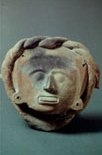
Click here to view image
Anthropomorphic head (fragment) (Aztecs/ Mixtecs), Mexico
Moulded terracotta

Click here to view image
Anthropomorphic head (fragment) (Aztecs/ Mixtecs), Mexico
Moulded terracotta

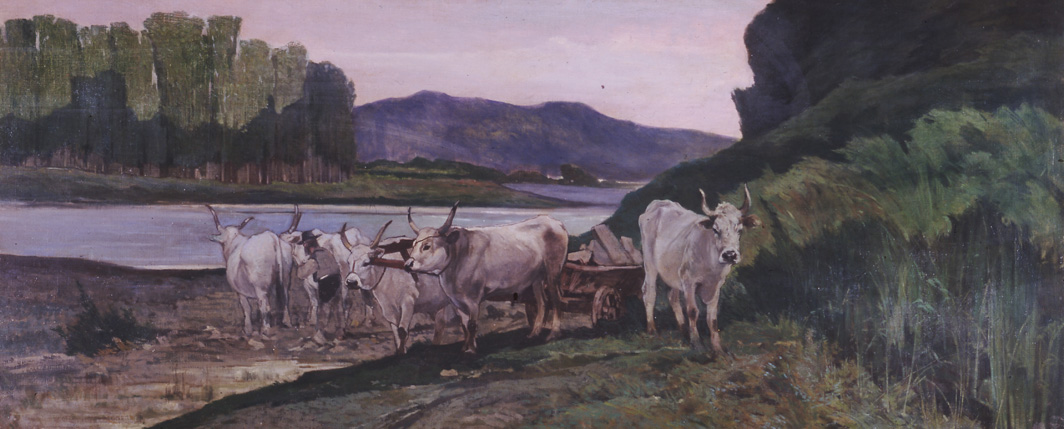
Click here to view image
Oxen on the banks of the Arno
Lazzaro G.B. Frugone 1935 Genova - legato
Fattori, Giovanni
painting
GPB 766
Unità di misura: cm; Altezza: 105; Larghezza: 44
olio su tela
Dating back to the years 1870-1875 by the scholar Andrea Baboni in the general catalogue of the Frugone Collections (2004), this masterpiece by Giovanni Fattori, a leading figure in the Macchiaioli group, entered the collection of the Genoese entrepreneur Gio. Batta Lazzaro Frugone (Genoa, 1860-1935) after 1929, when the work was still documented in the Vallecchi Collection, after having been, until 1928, in the possession of Mario Galli, a well-known collector of Fattori's works. In 1921 it was exhibited at the First Roman Biennale and registered as belonging to Cavalier Attilio Materazzi.
Fattori dedicated to the Tuscan river landscape, and in particular to a glimpse of the Arno and its banks, perhaps in the area between Bellariva and the Indian, a vision of solemn and emotional stillness, which is echoed in the painting "The Arno at Bellariva", now in a private collection in Leghorn. The colour of both, with its numerous shades of greens, greys and violets, and whites mixed with a vibrant light, is arranged, like tesserae in a mosaic and often clearly delimited by the outline mark superimposed on the hue, to compose the views. The work enriches the painting in the Raccolte Frugone and reaffirms its silent spatial immanence, the white bezel of the group of oxen and the chariot with the marble blocks in the centre of the canvas, enhanced and stemmed by the frothy verzura backdrop on the right and the horizontal coordinates of the banks. Another distinctive element, in the painting in the Genoese museum, is the presence of a peasant figure conceived by the Tuscan painter as a set of a few chromatic spots embedded in the swollen belly of an ox, signifying the zeroing of hierarchy in Factorian iconography in favour of the essence of nature rendered in the perfect synthesis of light and colour.


Click here to view image
Anthropomorphic votive figurine (mutila), V-VI sec. A.D (Teotihuacán III), Mexico
Terracotta

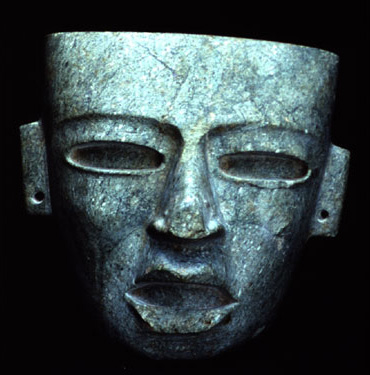
Click here to view image
Funerary mask
D'Albertis Enrico Alberto 1932 legato
cultura Teotihuacan III
Funerary mask
V-VI - 401 - 600
Unità di misura: cm; Altezza: 18; Larghezza: 14.5; Spessore: 5.5
Messico
pietra serpentina- scultura
Mostra d'arte precolombiana e di etnologia americana - Genova, Castello D'Albertis - 1972-1977<br>Mostra Colombiana Internazionale - Genova, Palazzo San Giorgio - 1950-1951
Similar masks are decorated with shell encrustations inside the eye sockets. Funerary mask made of a serpentine stone in grey-green colour. Triangular-shaped human face with elongated hollow eyes, wide eyebrow arch, raised nose and lips, half-open mouth and pronounced chin. The ears are pierced. Four suspension holes, two on each side.

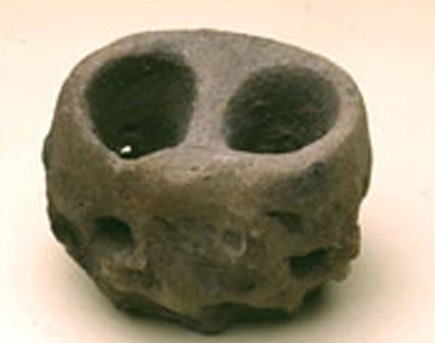
Click here to view image
Candelero, V - VI century A.D. (Teotihuacán III), Mexico
Terracotta
Candelero (incense burner for burning the Copal, yellow or reddish resin existing in some exotic plants), with two vertical cylindrical burners, with engraved decoration


Click here to view image
Anthropomorphic head, III - IV century A.D. (Teotihuacán II), Mexico
Terracotta
Anthropomorphic head with bilobed cranial deformation and auricular disc (part of whole figurine)

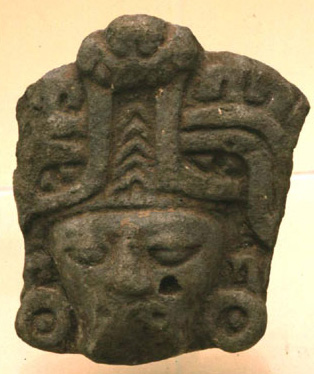
Click here to view image
Anthropomorphic head, 7th century A.D. (Teotihuacán IV), Mexico
Terracotta
Anthropomorphic head with headgear decorated with pastillates, flat back and vertical cavity at the base (maybe part of a whole figurine)

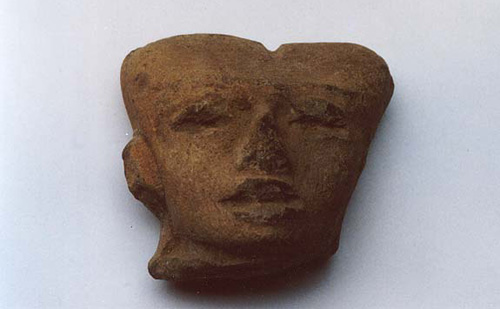
Click here to view image
Anthropomorphic head, II - VII century A.D. (Teotihuacán II - III), Mexico
Terracotta
Anthropomorphic head with bilobed cranial deformation (part of whole figurine)

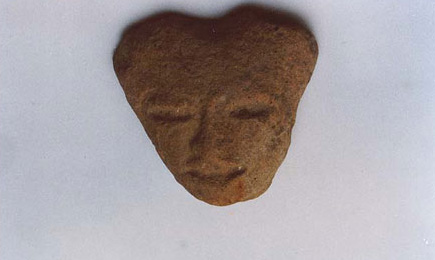
Click here to view image
Small head / anthropomorphic
D'Albertis Enrico Alberto 1932 legato
cultura Teotihuacan II-III
Small head / anthropomorphic
II-IV centuries C.E. - 100 C.E. - 600 C.E.
Unità di misura: cm; Altezza: 3.5; Larghezza: 4; Spessore: 1.5
Messico
argilla- modellatura a mano
Pinkish ochre color. Human face with bilobed cranial deformation. Embossed nose, incised eyes and mouth.


Click here to view image
Anthropomorphic head, III - IV century A.D. (Teotihuacán II), Mexico
Terracotta
Anthropomorphic head with cap cap and ear disc (applied with pastile decoration technique), (part of a whole figurine)




Headquarters:
Municipality of Genoa - Palazzo Tursi
Via Garibaldi 9 - 16124 Genoa
C.F / VAT 00856920102